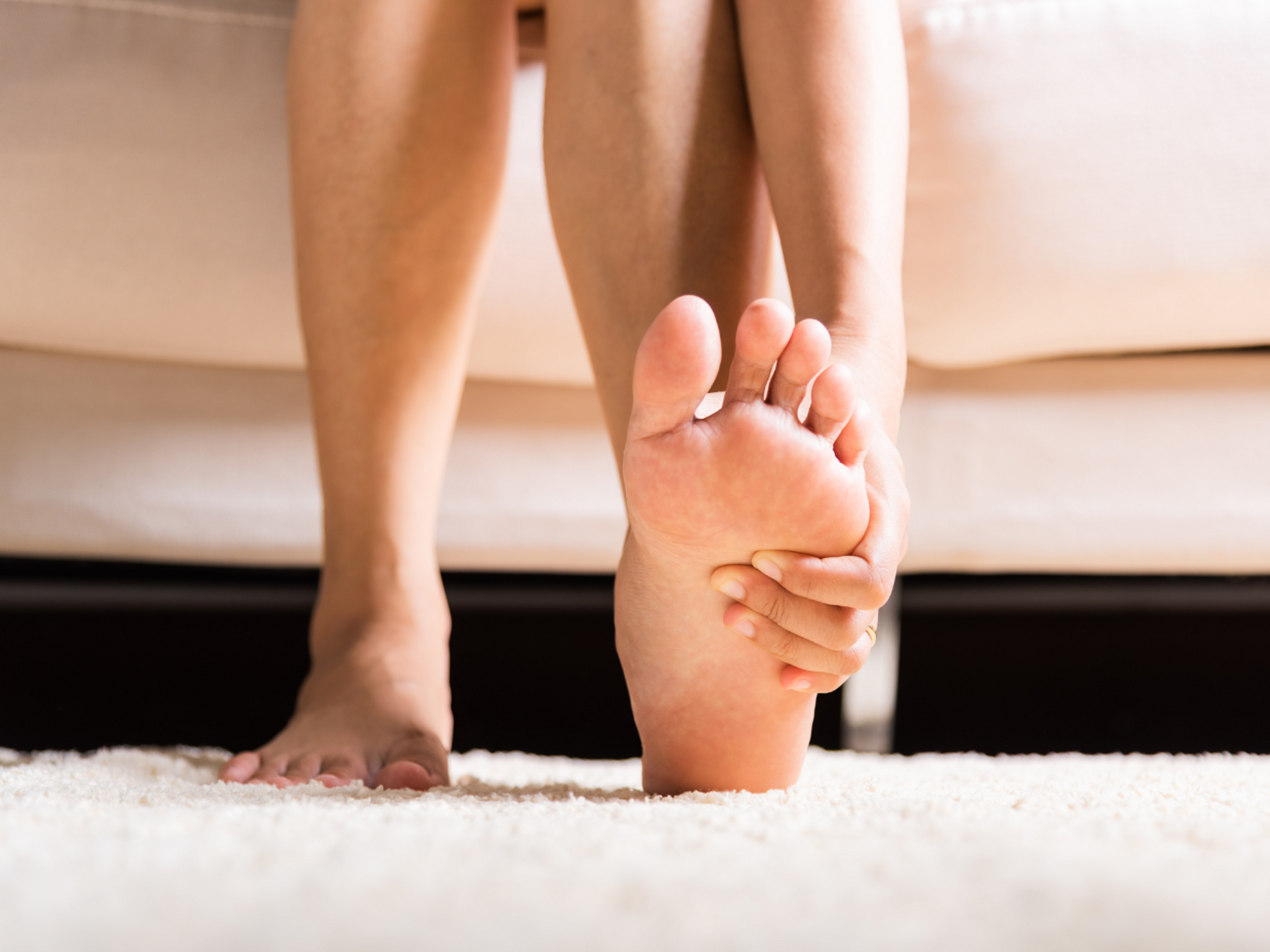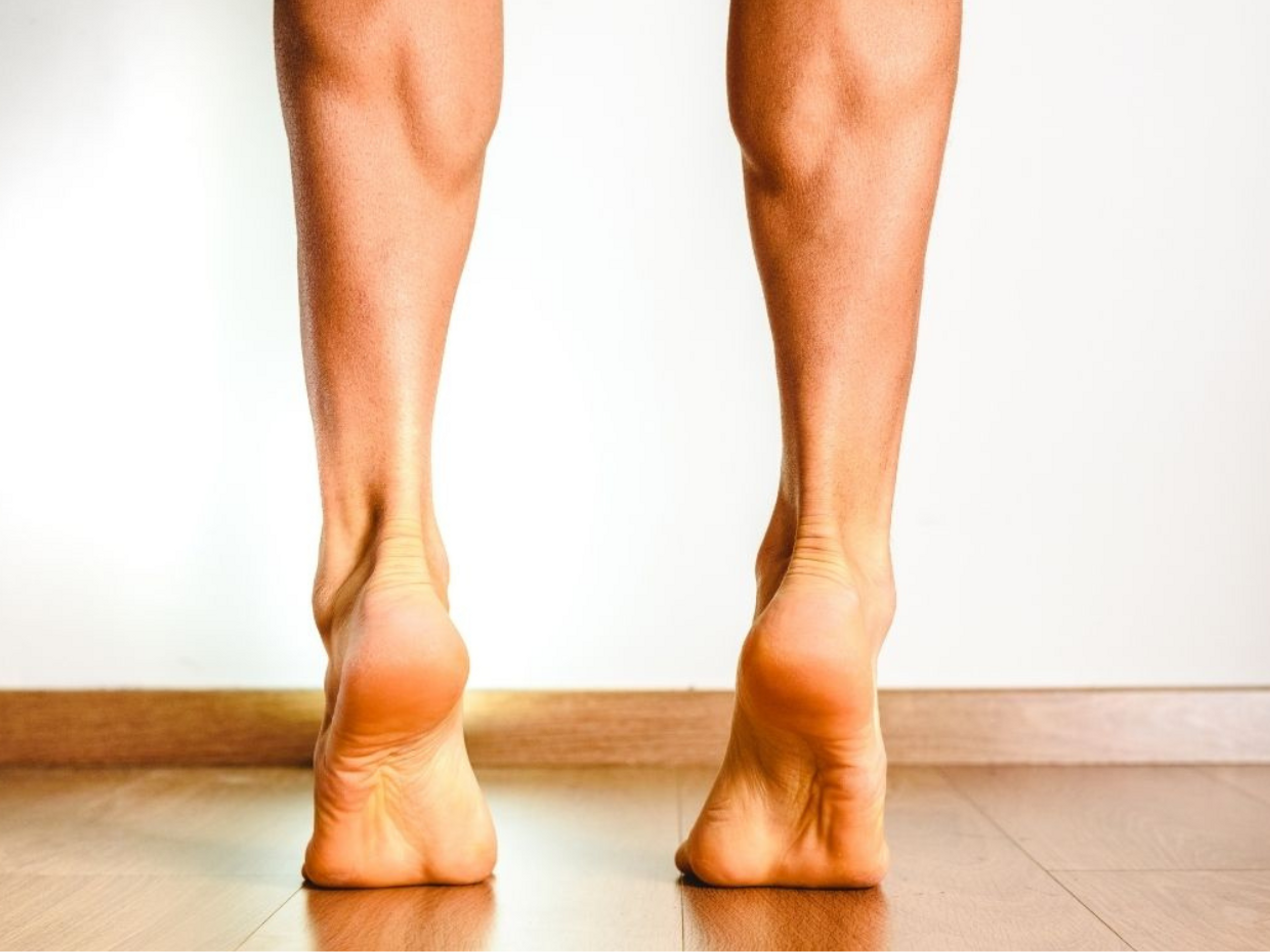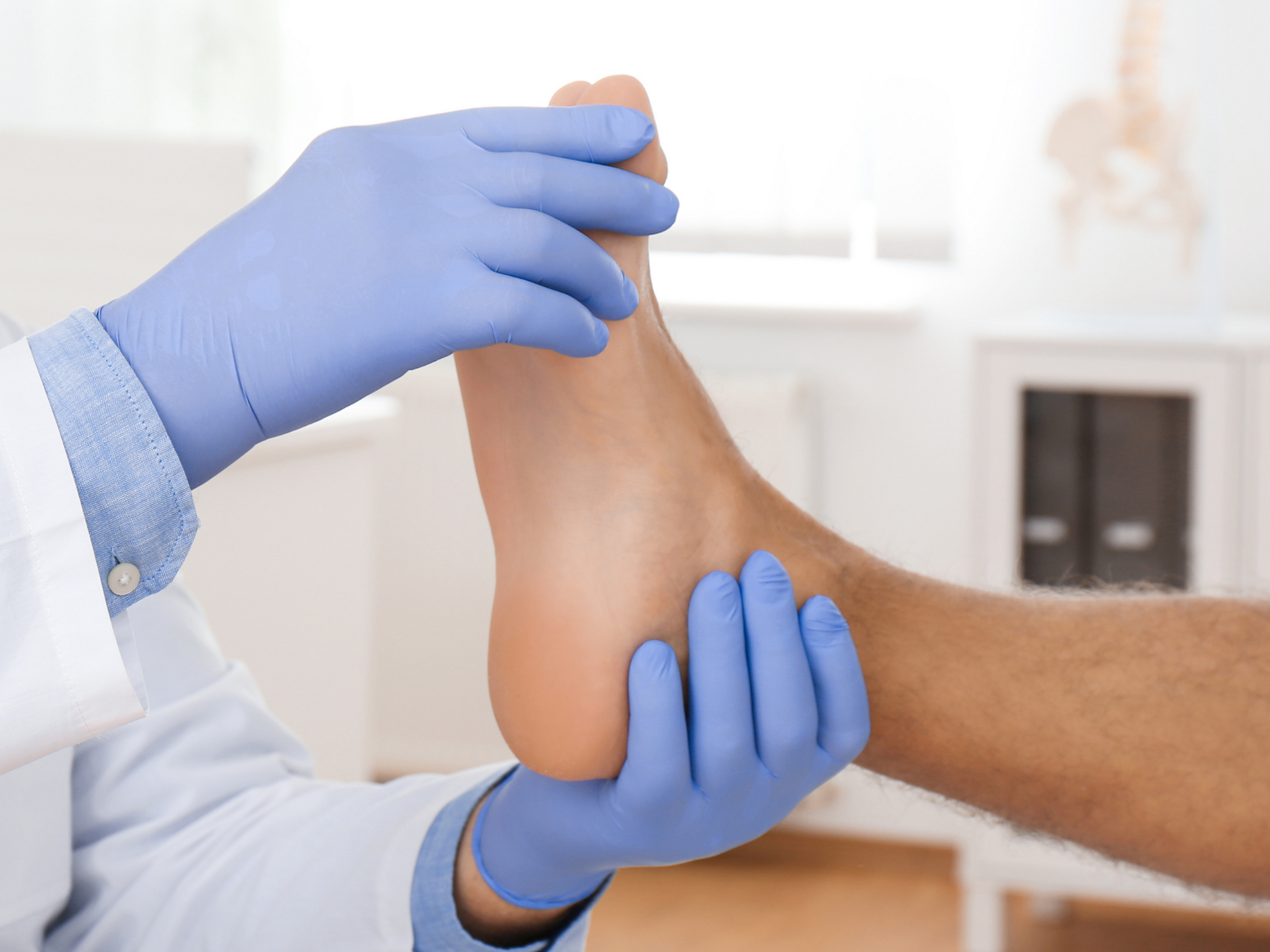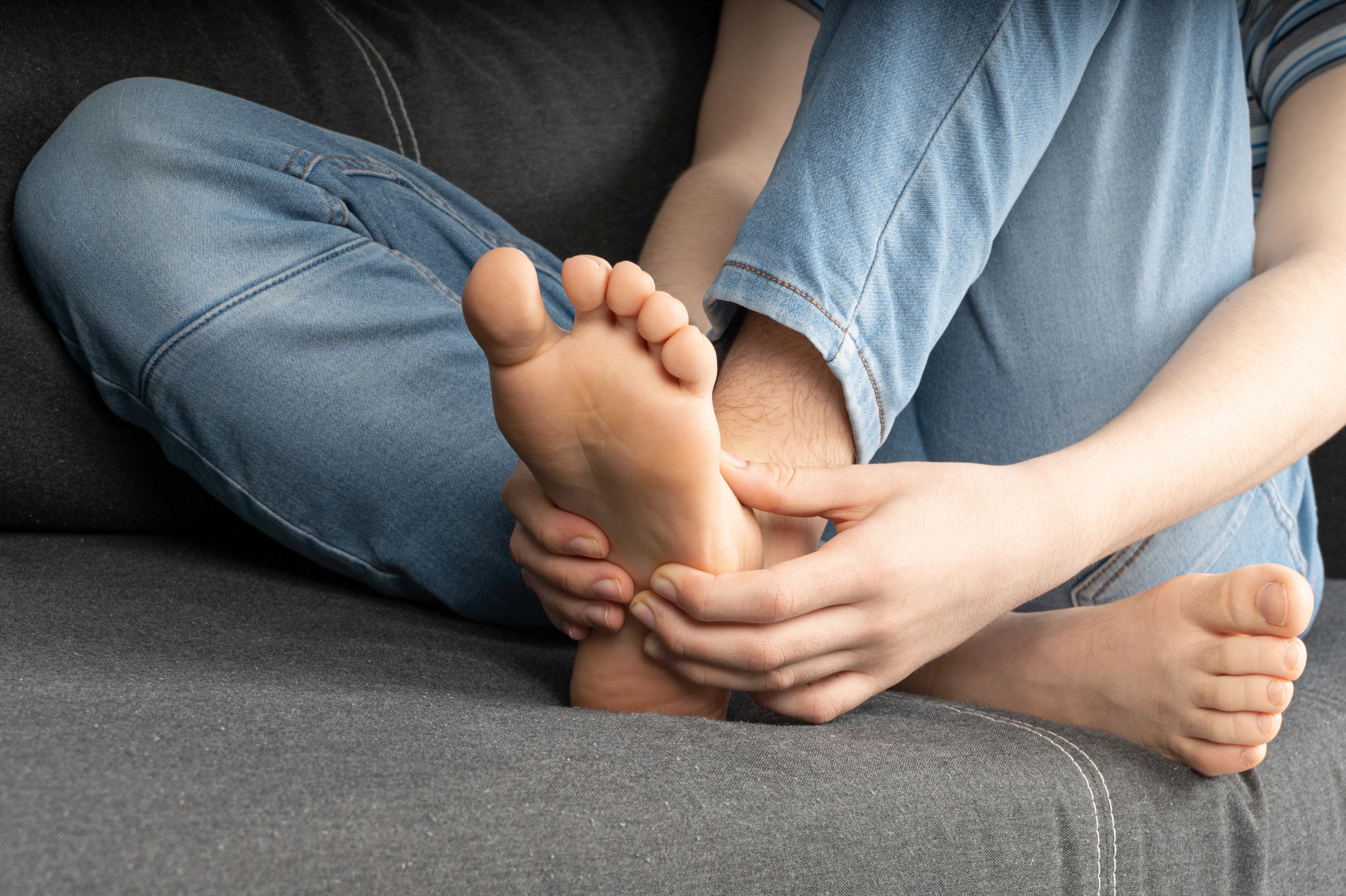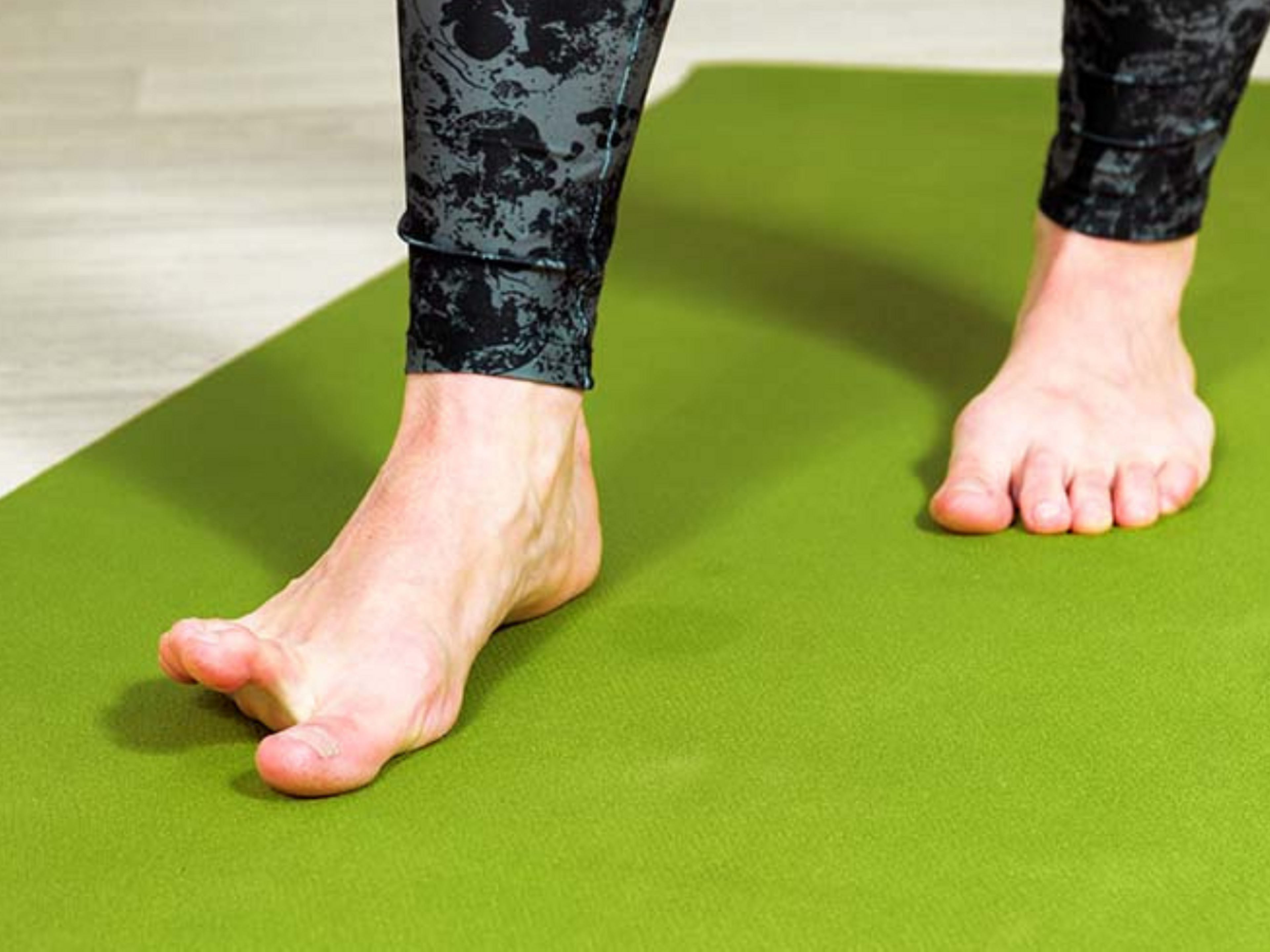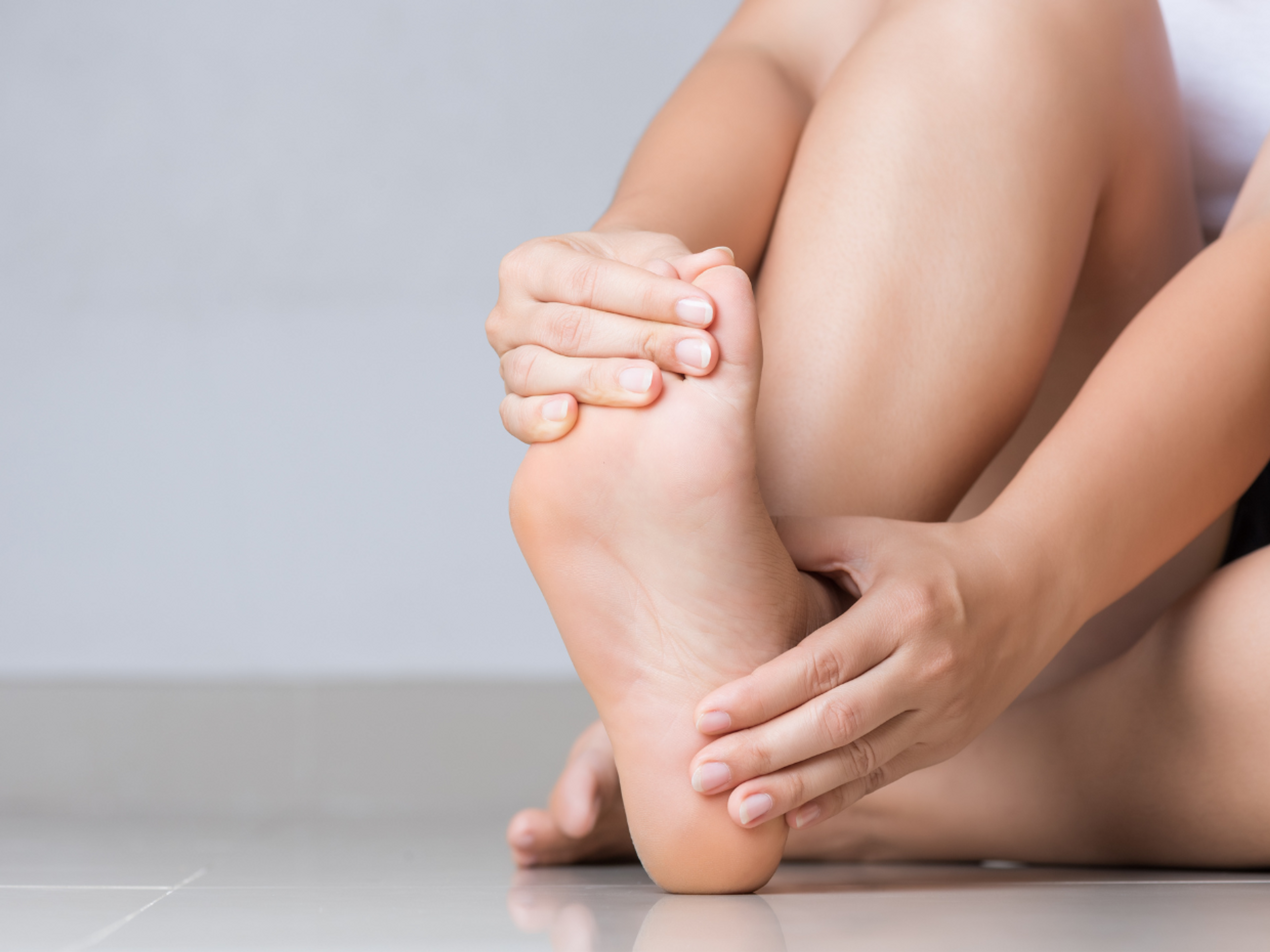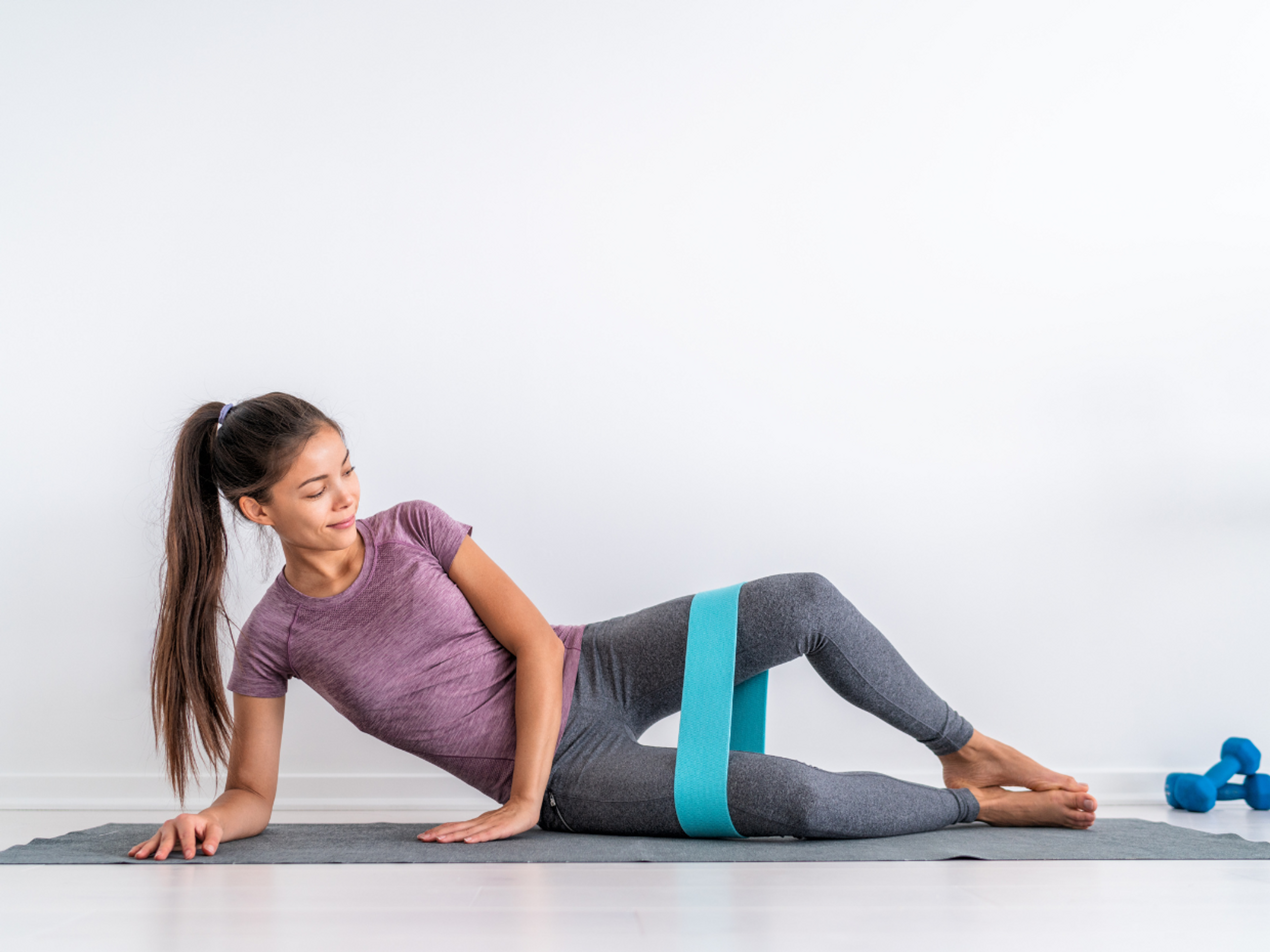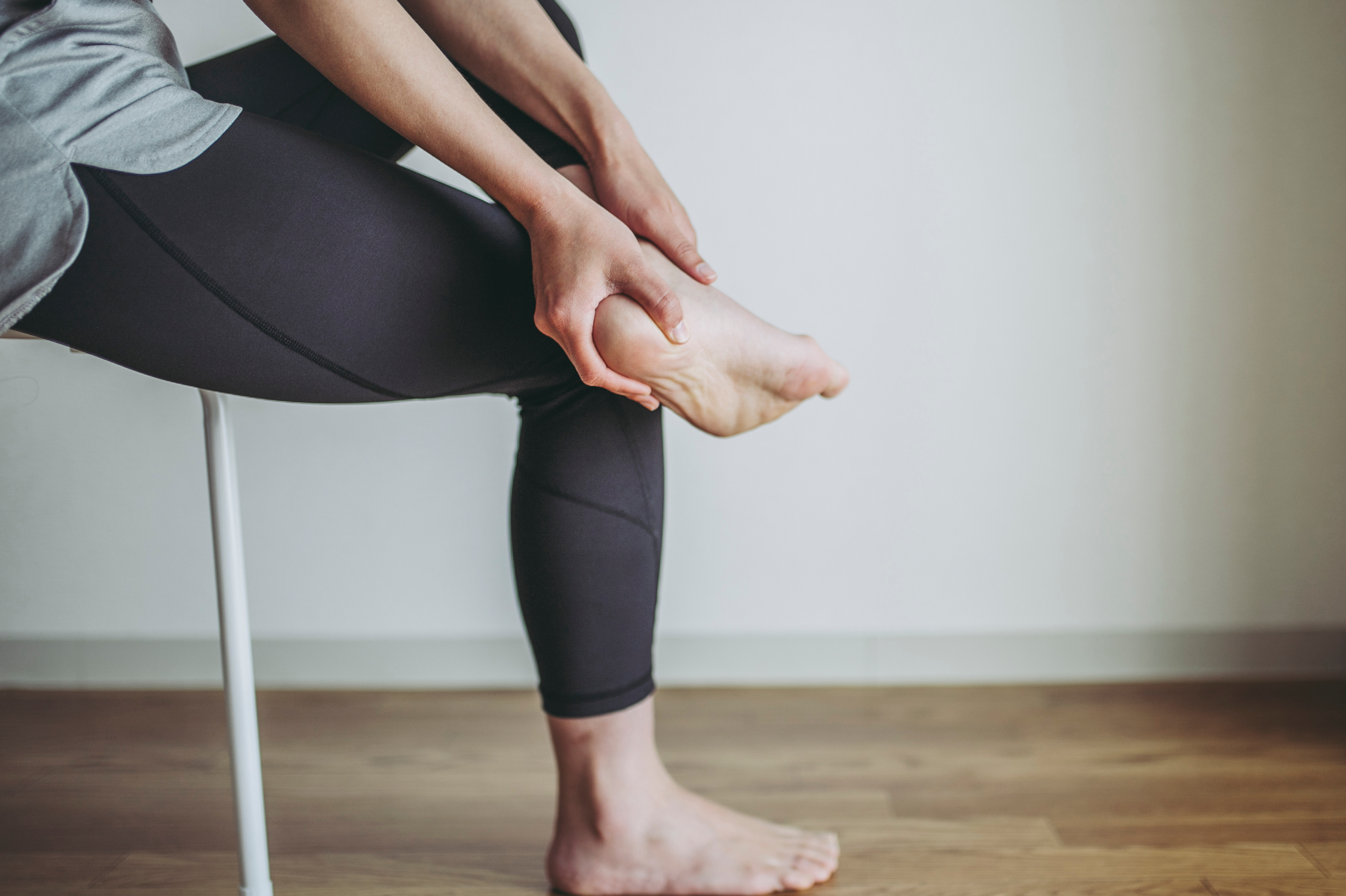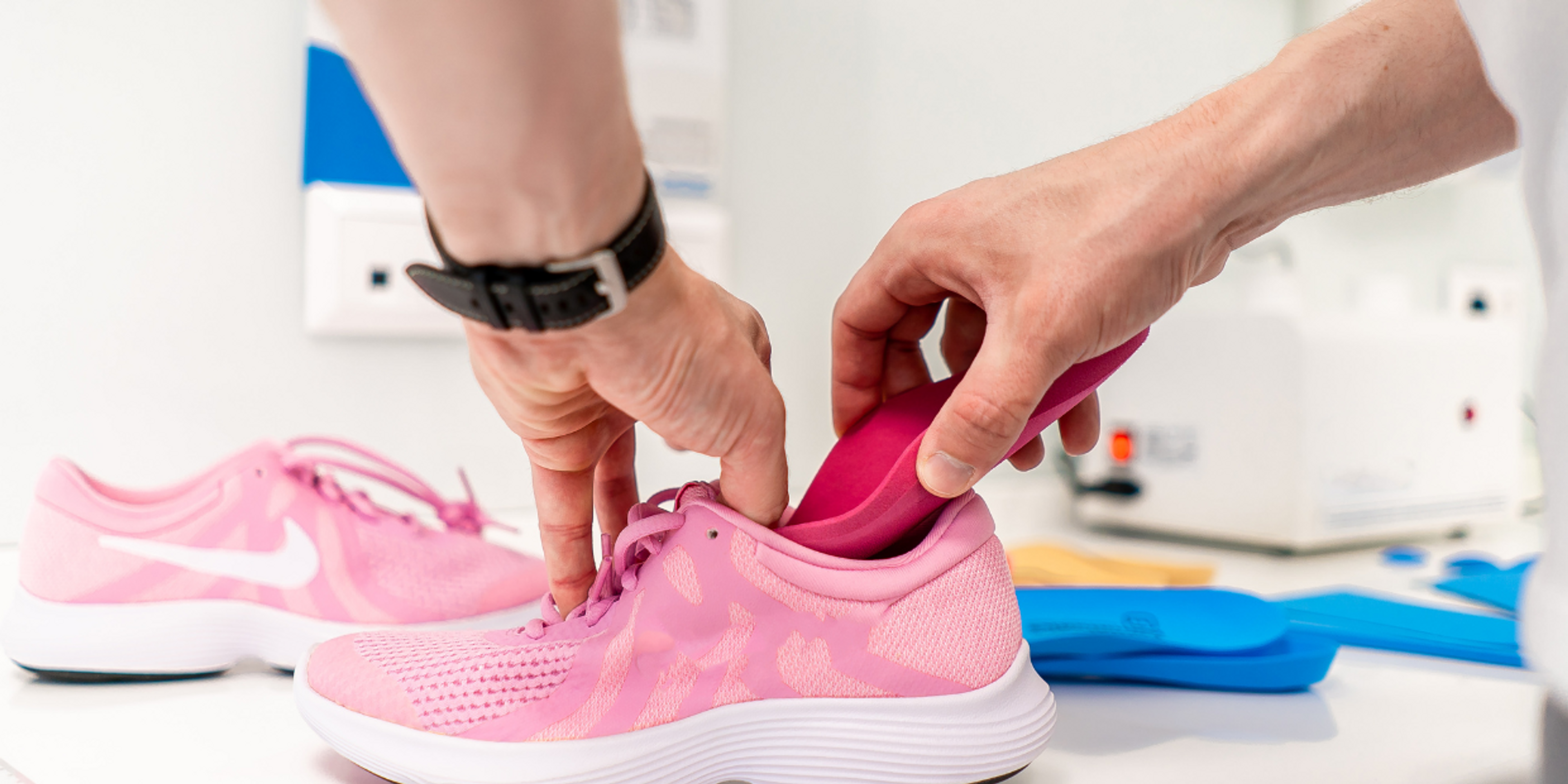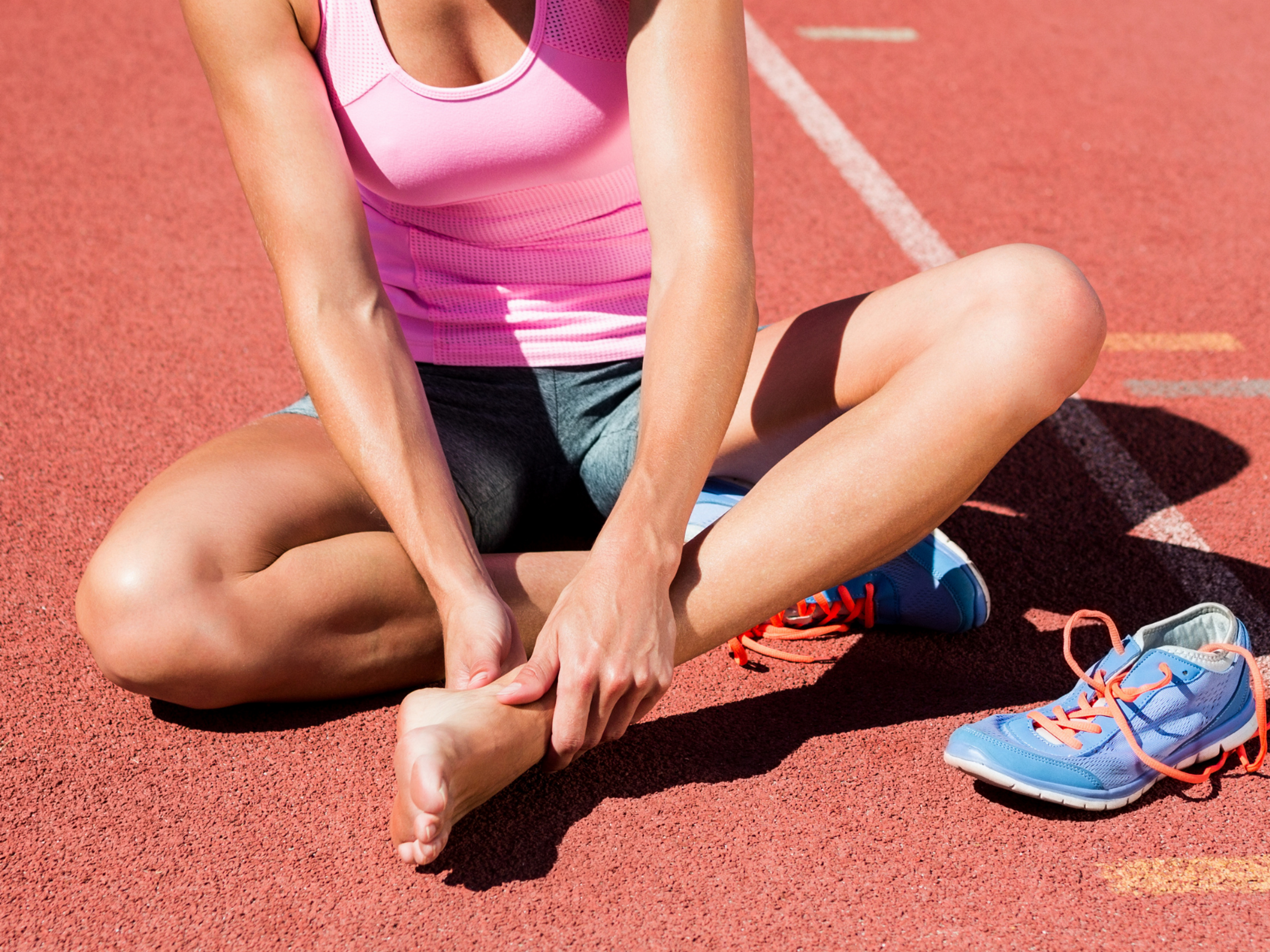Running and plantar fasciitis - your questions answered
Let's dive right in.
Can running cause plantar fasciitis?
Yes, running can cause plantar fasciitis. Here's how.
Your plantar fascia is a thick, fibrous band of tissue that runs from your heel bone to your toes. Its main job is to stop your foot arch from collapsing when you stand, walk, run, and jump.
Just like the other types of tissue in your body (muscles, bones, etc.), your plantar fascia can grow stronger (if you use it) or lose strength (if you reduce how much you use it) depending on what you do.
The plantar fascia can become overworked and injured when you suddenly increase the amount of work it must do or don't allow it to repair and recover after exercise.
Running can cause plantar fasciitis when you:
- Increase your running distance too quickly
- Increase your running intensity too quickly
- Do too many high-intensity runs
- Don't allow enough recovery time between runs
- Suddenly switch from running in supportive shoes to minimalist shoes or barefoot running
- Suddenly switch to running on hard surfaces when you're used to softer ones
Can I run with plantar fasciitis?
In our experience, running when you have plantar fasciitis, even with low pain levels, can often delay recovery or cause it to get worse.
You can usually get back to running once:
- you have restored full strength in your foot and calf muscles,
- can complete a hopping program pain-free,
- and can walk for 30 minutes at a brisk pace without pain.
If you're keen to continue running during your rehab, we suggest you adjust your running distances and terrain according to the guidelines in the cross-training section below.
Looking for specific guidance on rehab for plantar fasciitis? The Exakt Health app offers personalized exercise plans and evidence-based tips for smoothly and effectively managing plantar fasciitis in runners.
You can start using it at any stage of your recovery, and the app will adjust to your current condition, helping you progress towards a full return to running.
How long does it take for plantar fasciitis to heal?
If you ignore your heel pain and continue your usual activities, it can take 12 months or longer to resolve.
But, if you react quickly and start with the right treatments at the right time (within a few weeks of your first symptoms), you can recover fully within 8 to 12 weeks.
What treatment works best?
The best evidence-based treatments for plantar fasciitis include a combination of:
- Relative rest - Allows your plantar fascia pain to settle by cutting out, reducing, or adapting activities that aggravate your pain.
- Supportive shoes and insoles - Depending on the type you use, they may help reduce the load through the plantar fascia or cushion the injured area
- Taping your foot can also provide relief if you're not keen on using insoles
- Stretches for the plantar fascia and other leg muscles - Thought to reduce the tension on the plantar fascia
- Exercises that strengthen the foot muscles - Help share the load more evenly when you run
- Hip exercises - Improve your movement patterns, reducing the load on your plantar fascia
The plantar fasciitis rehab plan in the Exakt app covers all of the above. The app, designed by expert physical therapists, offers personalized exercises and robust monitoring tools that help you track your recovery progress.
What cross-training can I do during my recovery?
Finding other ways to move and stay fit can help your mental health and ensure a smooth transition back to running. But your foot may still be limited in how much of the cross-training it can do.
Figuring out the optimal load
When injured, that part of your body usually loses some strength and endurance and irritates easily.
To allow it to recover, you have to temporarily reduce the work it has to do during your daily and sports activities to a level it can comfortably cope with (this is known as relative rest).
Try to answer the question: How can I adapt my activities so they don't irritate my injury?
When judging how much work your injured leg has to do, you must consider all activities you use it for on that specific day.
Everyone is different, so it may take some trial and error to figure out your optimal plan.
General guidelines for judging training load when injured
Walking
Walking can be a helpful tool to build your injury's tolerance to weight-bearing and prepare it for a return to running.
Our suggestions are:
- Only start walking for exercise once it feels comfortable to do so. If your injury is easily irritated, it may not tolerate much walking during the early stages of rehab, so don't force it.
- Keep your pace slow to begin. The faster you walk, the harder your whole body has to work.
- Keep to even ground. Your legs must work harder when walking on uneven ground, especially down hills.
- Monitor your 24-hour pain and stiffness response to decide if you're pitching your walking distance, speed, and terrain at the correct level.
- Once you can walk continuously for 30 minutes at a leisurely pace, slowly increase your speed until you can do it briskly.
- Allow yourself at least 1 recovery day between walks.
Swimming
Swimming is excellent for maintaining cardiovascular fitness. If kicking off the wall hurts, avoid it until it is pain-free.
Cycling
Most people with plantar fasciitis find cycling comfortable, but using very high resistance during the early stages can sometimes cause pain.
Elliptical trainer
The elliptical trainer is usually OK to start once you can walk pain-free at a leisurely pace for 20 to 30 minutes. If you want to use it, we suggest testing a very gentle and short session first.
Running in a swimming pool
You can start running in the pool early in your rehab by using a floatation device and running without touching the bottom of the pool.
Pool running, where you push off the bottom of the pool, may be an option in the later stages of your rehab, but it can often irritate your shins at the start. Only consider doing this if you can walk at a brisk pace without experiencing an increase in your symptoms.
What running shoes are good for plantar fasciitis?
Supportive running shoes with enough cushioning are usually a better option than minimalist shoes when you are recovering from or have recently recovered from plantar fasciitis.
Why? Supportive, cushioned running shoes help absorb and reduce the load on your plantar fascia when you run.
You can usually ease back into minimalist shoes once your foot can cope with your regular running volume, intensity, and frequency while wearing more supportive shoes.
Must I change my running technique to avoid plantar fasciitis?
Not always. Most cases of plantar fasciitis are unrelated to running technique.
However, if you continue to experience problems when you ease back into running despite doing all the right things, then it might be worth considering.
The most common running form mistake that may increase the load on the plantar fascia is overstriding - where you plant your heel far out in front of you when you run.
We've previously explained how to assess your running form and fix problematic movement patterns like overstriding.
The Exakt app simplifies recovery by providing clear exercise guidance, 24-hour pain response testing, and helpful tips to enhance your rehab results.
